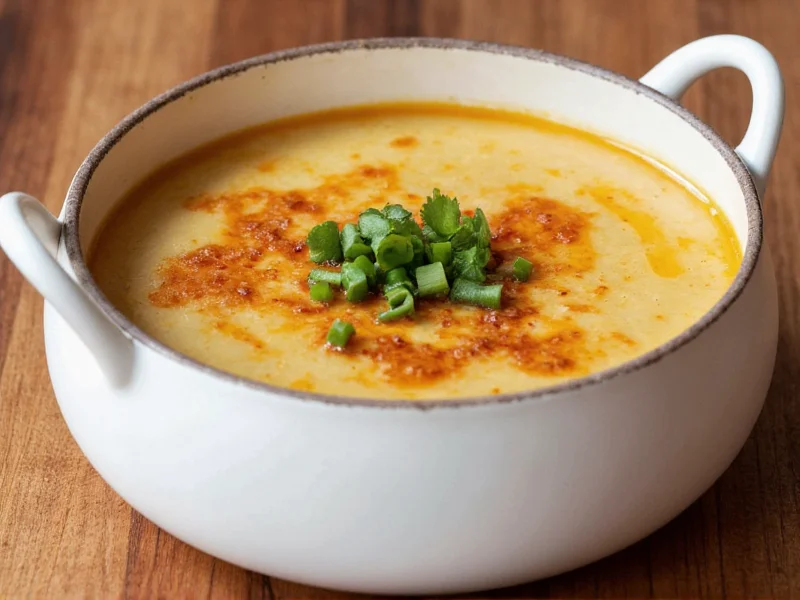Many home cooks mistake French onion soup for a quick weeknight meal, but genuine traditional French onion soup recipe demands time and technique. The magic happens during the slow caramelization process, where onions transform from sharp and pungent to sweet, nutty, and deeply flavorful. This isn't just soup—it's a culinary ritual perfected in Parisian bistros for centuries.
The True Origins of French Onion Soup
Despite popular belief, French onion soup didn't originate as peasant food. Historical records show it appeared in Parisian restaurants during the 18th century, created for wealthy patrons. The authentic Parisian French onion soup recipe we know today evolved in working-class bistros after World War I, when chefs repurposed stale bread and inexpensive beef broth.
Contrary to Americanized versions, traditional preparation contains no flour (which would make it a velouté), no wine (a common but non-essential addition), and absolutely no soy sauce or other flavor shortcuts. The depth comes solely from properly caramelized onions and quality broth.
Essential Ingredients for Genuine Authenticity
What separates a real French onion soup from American version comes down to four critical components:
| Ingredient | Authentic Requirement | Common Inauthentic Substitution |
|---|---|---|
| Onions | Yellow onions only (8-10 large) | Mixing with sweet onions or shallots |
| Broth | Rich beef broth (never chicken or vegetable) | Store-bought bouillon cubes |
| Bread | Day-old baguette slices | Croutons or other bread types |
| Cheese | Comté or Gruyère (never mozzarella) | Swiss cheese or blended cheese mixes |
The Non-Negotiable Caramelization Process
Mastering proper French onion soup caramelization technique is the single most important step. Authentic preparation requires:
- Time: Minimum 2 hours, preferably 2.5-3 hours over low heat
- Patience: No rushing with higher heat (causes burning, not caramelization)
- Attention: Stirring every 15-20 minutes as onions progress through stages
- Oil selection: Butter alone burns; use 50/50 butter and neutral oil
Watch for these visual cues during caramelization:
- 30 minutes: Onions become translucent with some browning
- 1 hour: Golden edges appear, liquid evaporates
- 1.5 hours: Deep golden color, fond develops on pot bottom
- 2+ hours: Rich mahogany color, sweet aroma fills kitchen
Step-by-Step Authentic French Onion Soup Recipe
This traditional French onion soup preparation method serves 4 and requires 3.5 hours (mostly hands-off time):p>
Ingredients
- 8 large yellow onions, thinly sliced
- 3 tbsp unsalted butter
- 2 tbsp neutral oil (canola or grapeseed)
- 1 tsp sugar (optional, aids caramelization)
- 1 tsp sea salt
- 6 cups rich beef broth (preferably homemade)
- 1 baguette, sliced into 1" rounds
- 200g Gruyère cheese, grated
- 1 bay leaf
- 4 sprigs fresh thyme
Instructions
- Caramelize onions slowly: Melt butter with oil in heavy-bottomed pot over medium-low heat. Add onions, salt, and sugar. Cook uncovered 2.5-3 hours, stirring every 15-20 minutes, until deep mahogany.
- Build flavor foundation: When onions reach proper color, add 1/2 cup broth to deglaze, scraping up all fond. Repeat twice more.
- Add remaining broth: Pour in remaining broth with bay leaf and thyme. Simmer 30 minutes.
- Prepare croûtons: Toast baguette slices until crisp but not browned.
- Assemble traditionally: Ladle hot soup into oven-safe bowls. Float 2-3 baguette slices on top. Cover generously with Gruyère.
- Melt cheese properly: Place under broiler just until cheese bubbles and browns at edges (45-60 seconds).
Why Most Homemade Versions Fail Authenticity
Even experienced cooks make these common French onion soup mistakes that destroy authenticity:
- Rushing caramelization: Using high heat creates bitter, burned onions instead of sweet, complex flavor
- Using the wrong onions: Sweet onions lack the necessary pungency that transforms during cooking
- Adding flour: Creates thickness but masks the pure onion flavor central to the dish
- Incorrect cheese selection: Mozzarella or Swiss won't melt properly or provide authentic flavor
- Serving temperature: Soup must be piping hot (190°F/88°C) when cheese goes on to melt properly
Genuine Regional Variations Within France
While the Parisian version is most famous, regional authentic French onion soup variations exist:
- Lyonnais style: Includes a splash of white wine added during caramelization
- Niçois version: Uses olive oil instead of butter for a Provençal twist
- Northern France: Sometimes incorporates a small amount of beer
These regional differences remain authentic because they maintain the core technique of slow onion caramelization with quality beef broth. The American habit of adding sherry, Worcestershire sauce, or excessive herbs fundamentally changes the dish's character.
Serving Like a Parisian Bistro
True traditional French onion soup presentation follows these guidelines:
- Served in wide, shallow soup plates (not deep bowls)
- Cheese forms a continuous cap over the entire surface
- Bread soaks up soup from beneath the cheese layer
- No visible onions—they're completely broken down into the broth
- Served immediately after broiling while cheese is still bubbling
Pair with a simple green salad and crisp white wine for the complete Parisian bistro experience. Remember that in France, this is considered a complete meal, not just a starter.











 浙公网安备
33010002000092号
浙公网安备
33010002000092号 浙B2-20120091-4
浙B2-20120091-4